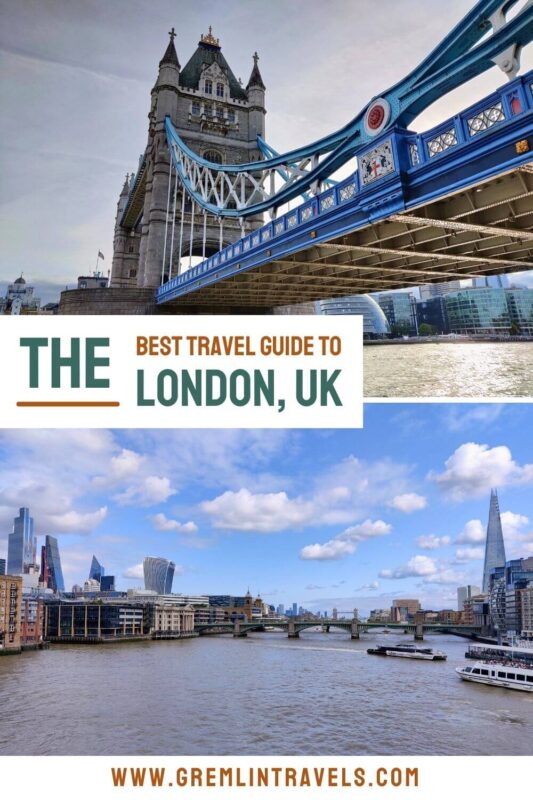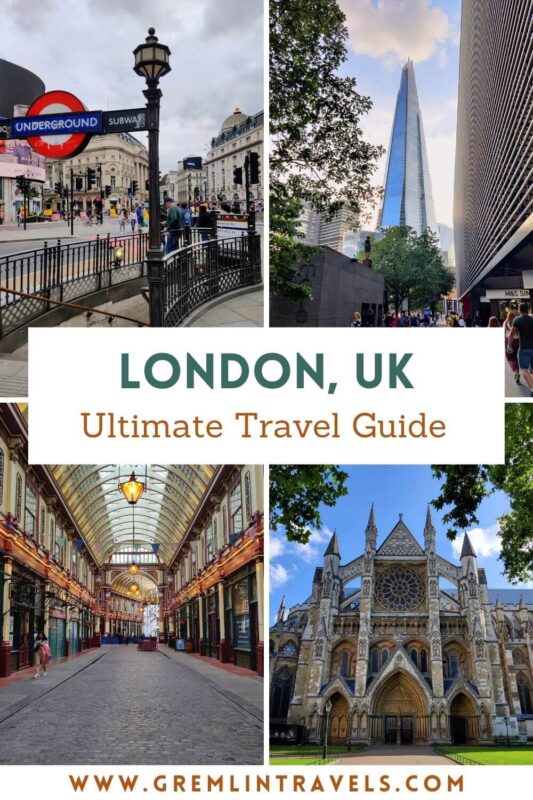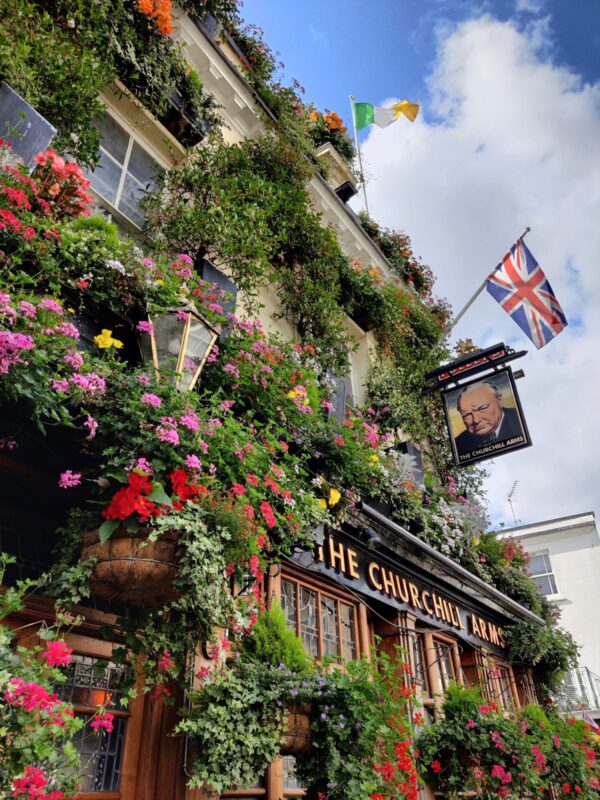London
Travel Guide
Welcome to our London travel guide, where we explore one of the most famous, popular and important cities in the world, and everything you need to know about visiting London. The the beating heart of England and the UK, London is a city that is hard to put into words. With an array of nationalities, religions and cultures all calling London home, London is multicultural, diverse and ever-changing, constantly adapting to stay one of the most epic cities in the world.
London has so much to offer visitors, from iconic attractions, historical landmarks and vast green parks. However, there’s so much more to explore when visiting London including learning about what and who keeps the city alive, buzzing and evolving. From the decades old pie and mash shop, to the new food markets popping up all over the city, London really does cater to everyone. Explore the top attractions in London by all means, but remember to go further afield, walk down the small quiet streets and get lost in the city and you’ll discover a side to London that you didn’t know existed.
London Travel Guide Contents
Check out our other UK Travel Guides:
Bath Travel Guide | Bristol Travel Guide | Cardiff Travel Guide
London Travel Guide
How to get to London
With six airports serving London city and the surrounding areas, London has more airports serving passengers than any other country in the world. This can make flying into, and visiting London a little confusing, to say the least. Here we discuss the three most major airports, based on passenger traffic which are London Heathrow (LHR), (also one of the busiest airports in the world), London Gatwick (LGW) and London Stansted (STN). London Heathrow is the biggest and busiest of all the airports and serves a varied array of domestic, European and International flights from its 5 terminals. The airport is modern, very well equipped and well connected. London Gatwick also serves a range of flights, including international and low-cost carriers and is also a modern and well-equipped airport. Likewise for Stansted, which is the furthest of the 3 mentioned outside of London, but still well connected and is the base for Ryanair, one of the biggest low-cost airlines in Europe. Let’s take a look at how to get to London from the airport:
LHR by train – This is the best way of getting to and from LHR to London, going to London Paddington station. The service runs from 05:17 to 23:59 and departs every 15min. Journey time to Paddington from terminals 2&3 is 15min, 21min from terminal 5. There is a free shuttle available to terminal 4 from terminals 2&3. Heathrow has ticket counters and machines in arrivals for the Heathrow Express, with tickets costing £25 ($35) for a single on the day. Book online via their website to save money, particularly if you book in advance, or via Trainline. From Paddington, you can get to most of London via the underground network
LHR by taxi – A taxi from London Heathrow into central London will cost in the region of £105 ($145) and will take around 45min, prices can vary quite considerably depending on where you’re going in London. Taxis are available from outside arrivals. Welcome pickups offer transfers from £90 ($124) if you book via their website.
LGW by train – The Gatwick Express connects LGW to London Victoria in around 30min. Trains run from 05:00 to 00:30 and depart every 15min from the South Terminal. Tickets cost £19.90 ($27.50) one way if bought at the counters or ticket machines at the airport. Buy online via their website or Trainline to save money. From London Victoria, you can get to most of London via the underground network
LGW by taxi – Taxis are available from outside arrivals at Gatwick airport and will cost around £60 ($83) for a journey into the centre of London. The journey takes approx 60min
STN by train – The Stansted Express connects London Stansted with London Liverpool Street station, in the business district. The journey time is 47min, with trains departing every 15min from 05:30 to 00:30. Tickets cost £16.60 ($23) per person, one way and can be bought at counters and machines at the airport, or online via Trainline. You can connect to the rest of London from Liverpool St via the underground network
STN by taxi – A taxi from Stansted airport into the centre of London will take approx 80min and cost in the region of £100 ($138). Taxies are available from outside arrivals

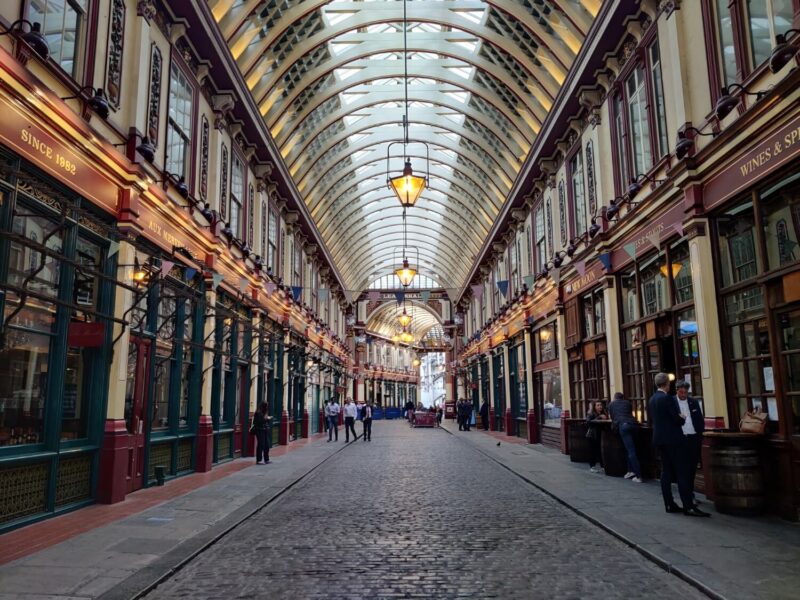
Areas to stay in London
We’d advise any newbies to London to stay in the central London area, particularly around the West End and Soho areas if possible. These areas have good connections, restaurants and shops and are close to the majority of the main attractions. However, as a city with a population of almost 9 million people, London is big and has lots of areas to stay and explore. We’ve put together a brief list of areas for where to stay in London and the main features of each one:
West End- The recommended area to stay, encompassing Covent Garden, Piccadilly Circus and Trafalgar square. This is close to attractions, nightlife, shops and well connected providing the best of all worlds
Soho – The top nightlife area in central London, Soho has countless restaurants, bars and clubs and is close to all the main attractions with good transport links too
Westminster – Great for London sightseeing, Westminster is close to some of the most famous London attractions. Restaurants and hotels in this area are mainly chains
Kensington – Great for museum lovers and families, this is where many museums are located alongside a good selection of shops and restaurants. Accommodation can be a little more expensive here
Shoreditch – One of the coolest areas in central London, Shoreditch is home to independent and boutique restaurants and bars as well as many clubs, so great for those wanting to be close to nightlife. Accommodation can be less expensive here although getting into the heart of the city takes longer
Paddington – Good for transport links out of London and into the west country, as Paddington train station is close by. Plenty of accommodation options here and a growing number of restaurants and bars, although the area is generally a little quieter
City of London – Great for business travellers as this is where many offices and large companies reside in the city. Good transport links but quieter in the evenings
Marylebone – Located between the west end of Oxford Street and Regents Park, Marylebone is a great area if you want to be close to great shopping and lots of restaurants and bars
South Bank – With attractions such as Borough Market, The Tate Modern and the London Eye, Southbank is great for being within walking distance to a number of attractions and having a more scenic view over the River Thames
Kings Cross – For connections out of the city to the north of the country, Kings Cross is a great place to stay. It’s also home to some of the best budget hotels and hostels in the city
Accommodation in London
London has a fantastic array of accommodation options to choose from. There are plenty of hostels and budget hotels as well as chain, mid-range and luxury hotels. If you’re looking for apartments, there are also plenty available, but these can be expensive and sometimes quite small. Prices can be high in London so booking as far in advance as possible is strongly advised. New Years’, July and August and Easter (Mar-Apr) are some of the peak times of the year so be wary of travelling and booking accommodation at these times. We can by no means cover all of the best accommodation options in London on this guide, or anywhere for that matter, but here is a small selection of some of our favourite places to stay in London:
Budget Hostel | Wombats The City Hostel – Located near the Tower of London, Wombats The City Hostel is a great value base for exploring London. Rooms are clean, simple and comfortable with options including dorms and private rooms. There are shared kitchen and lounge areas for guest use
Mid-range Hotel | Z Hotel Piccadilly – The Z Hotel chain offers simple, comfortable rooms in some of the best locations in London. The Z Hotel Piccadilly is in a fantastic location, close to everything and, while the rooms are small, they are ideal for a few night’s stay in the city in a great location at good value
Mid-range Hotel | Citizen M Bankside – The Citizen M hotel chain strikes again, this time with their London Bankside hotel which is in a great location for exploring London and has contemporary, well-equipped rooms, a cafe on-site and lots of useful extras
Apartment | Locke at Broken Wharf – For apartments in London, look no further than Locke at Broken Wharf. Located in the City of London, the apartments come in a range of sizes and offer guests beautifully designed and well-equipped spaces with everything you need to feel at home
High-end Hotel | The Hoxton, Holborn – The Hoxton, Holborn is one of the coolest places to stay in London. Stunning interiors fill this listed building alongside contemporary, comfortable rooms. The hotel is a short walk from Soho, Covent Garden and Piccadilly and has a great restaurant and café space
High-end Hotel | The Montcalm Marble Arch – Situated near Marble Arch, The Montcalm offers guests a great location, spacious rooms and lots of great facilities such as a pool, spa and fitness centre
Luxury Hotel | The Ned – For luxury in London, stay at The Ned. This elegantly restored building is home to The Ned’s 250 bedrooms, 10 restaurants and spa facilities
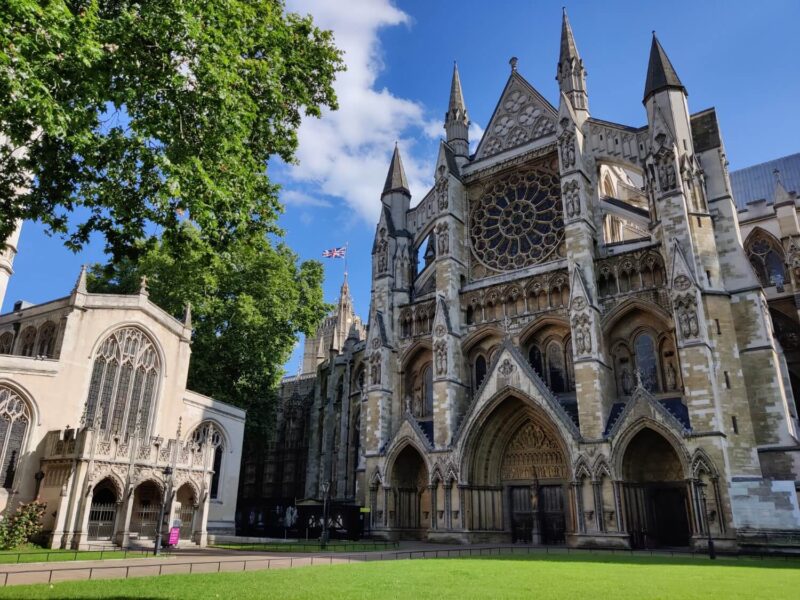
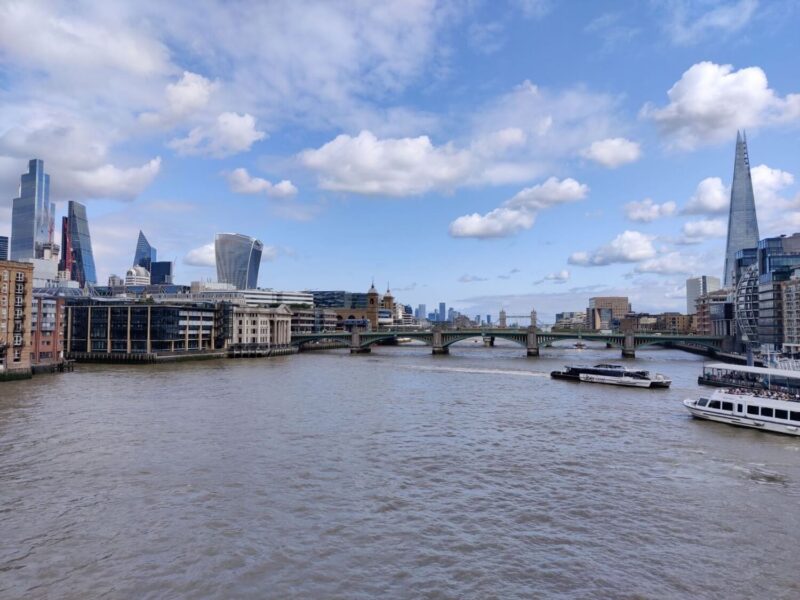
How to get around London
London is very well connected with public transport. Home to the oldest underground network in the world, a vast bus network and various other rail options, getting across the city and to some of the finest London attractions, couldn’t be easier. However, the size and complexity of London’s public transport network can be a little daunting for visitors to the city, so we’ve tried to break down the options for getting around London as simply as possible:
Underground – Also referred to as the Tube, London’s underground network consists of 11 lines; the Bakerloo (brown), jubilee (grey), central (red), Hammersmith and city (pink), circle (yellow), northern (black), district (green), metropolitan (purple), Victoria (light blue), Waterloo (light green) and Piccadilly (dark blue). The network is split into zones, zone 1 being the most central, 2 being further out and so on. You can get to most places in central London using the tube, and never have to walk much more than 10min to find a station. Single tickets cost £5.50 ($7.50) for a one-way journey in zone 1, however, this price is more than halved if you use an oyster card or contactless payment card (debit or credit card), to £2.40 ($3.30). Using these cards, there are also caps for how much you can be charged in one day and over one week. Make sure you always tap in and tap out to avoid being overcharged. A night service also runs on certain lines.
Train – There are several other rail options within London which all connect to underground stations at some point. These are local train services, TFL rail, the Overground and Docklands light rail
Bus – London’s bus network is extensive and covers the entire city. All 8,500 buses in the network are low floor vehicles, meaning they are suitable for wheelchair users. Bus stops are located throughout the city and have information on what buses stop there and when. A single ticket costs £1.55 ($2.20) and a day’s worth of bus travel will cost a maximum of £4.65 ($6.50). There are no zones for the buses so these are flat rates. Buses are all cashless so you will need to use an oyster card or contactless payment card. Night buses across the city also keep the bus services running 24hrs a day
Uber Boat – A relatively new way to travel the city via the Thames River, a more scenic experience. Uber has launched a series of hop-on, hop-off boat routes with Thames Clippers. There are 4 lines in total and stops are located in zones, similar to the underground. Prices vary depending on the zone you start from and end at. The max single ticket price is £14.00 ($19.25). These prices can be reduced by using an oyster or contactless card
Taxi – The most common taxis in London are black cabs. These are the only taxis that can be hailed, all others must be booked. If a black can is available, the yellow taxi light will be on, on top of the car. There is a minimum charge of £3.20 ($4.40), and they are required to accept any journey up to 12 miles. Black cabs can be expensive so we advise choosing public transport where possible
Uber – Uber is fully operational in London and is a great alternative to black cabs, which can be expensive. Wait times are very short in central London. Prices can vary depending on the time of day and how busy the network is
Things to do in London
London has a vast selection of museums, large green parks, historical landmarks and attractions and markets. All this makes figuring out what to do when visiting London a little overwhelming. The sheer scale of the city means that multiple trips will likely be needed to tick off your London sightseeing list. We’ve put together a compact list of the top 5 things to do in London to help you plan your trip:
Hyde Park – Covering 350 acres, this park is the largest royal park in central London and features a lake, a few cafes, various landscaped areas and monuments throughout. The park is free to enter and is a must-visit while in London
Tower of London – A centuries-old historic castle that is of great importance to English heritage, this London attraction partially acted as a prison for many years too. Adult tickets in peak season are £29.90
The British Museum – With over 8 million objects on display, the British Museum is one of the largest in the world. Collections include human history, art and culture. The museum is free to enter
Buckingham Palace – Built in 1705, this palace is the official residence of the Queen and is suitably grand. Take a stroll down the mall and up to the palace to get the best experience and view
Palace of Westminster & Big Ben – Built in 1015 and rebuilt in 1870, the Palace of Westminster is the meeting place for the house of commons and lords in England. Adjoined to the palace, the Elizabeth tower, whose bells are known as Big Ben, is one of the most famous clock towers in the world
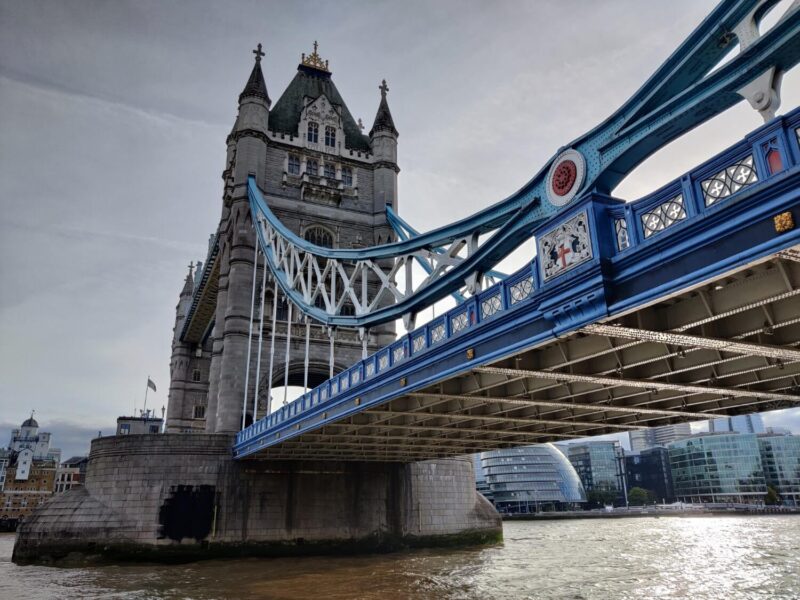

What to eat in London
London is home to just under 17,000 restaurants, bars and cafes, comprising of a very diverse range of cuisines available from British to Venezuelan and everything in between. Food can be expensive, but there are still budget options available alongside the 66 restaurants that have been awarded one Michelin star or more. No trip to London would be complete without visiting a few classic British Pubs, and there are many to choose from in London which we highly recommend doing if you want to experience some true British culture. If you’re looking to try some British cuisine while visiting London then here is our pick of what to eat in London:
Pie and mash – In its most traditional form, pie and mash consist of a pie with meat, often mincemeat in shortcrust pastry, served with creamy mash and liquor sauce. However, there are many pie variations including steak and ale, chicken and leek and steak and stilton, served with a rich gravy
English fry up – The world-famous English fry up is a breakfast dish made up of a combination of foods, usually bacon, fried eggs, toast, baked beans, tomato and sausage. Common additions are hash browns, mushrooms and black pudding
Fish and chips – Crispy and light beer-battered cod or haddock served with chips, tartar sauce and mushy peas
Apple crumble – A sweet English dessert of stewed apples topped with a crumble mixture made of flour, butter and sugar. Commonly served with vanilla ice cream or custard
Scones – A sweet baked good which is often cut in half and filled with cream and jam. Commonly served as part of a cream or afternoon tea selection
Money - London Travel Costs
The currency in England is the British Pound (£). Credit & Debit cards are widely accepted throughout England, including London, and there are plenty of ATMs that accept foreign cards. A service charge is commonly added to the bill in mid-range, chain and high-end restaurants, this is usually either 10% or more commonly now, 12.5%. If a service charge has not been added, you can leave a tip if you are happy with the service. A tip of 5-10% is the norm and you can round up for taxis. As one of the most famous and most popular capital cities in the world, London understandably sounds expensive and many will ask how much does a trip to London cost? Although the city can be expensive, it can be reasonable in many areas of travel and can be suitable for any traveller. Here’s a guide for what you can expect to pay (per person) for:
A local draught beer – £4.50-£6 ($6.25-$8.25)
A coffee – £2.50-£4 ($3.50-$5.50)
A sandwich – £2.50-£3.50 ($3.50-$4.75)
Budget restaurant meal – £10-£20 ($13.75-$25.50)
Mid-range restaurant meal – £25-£45 ($35-$62)
High-end restaurant meal – £55+ ($76+)
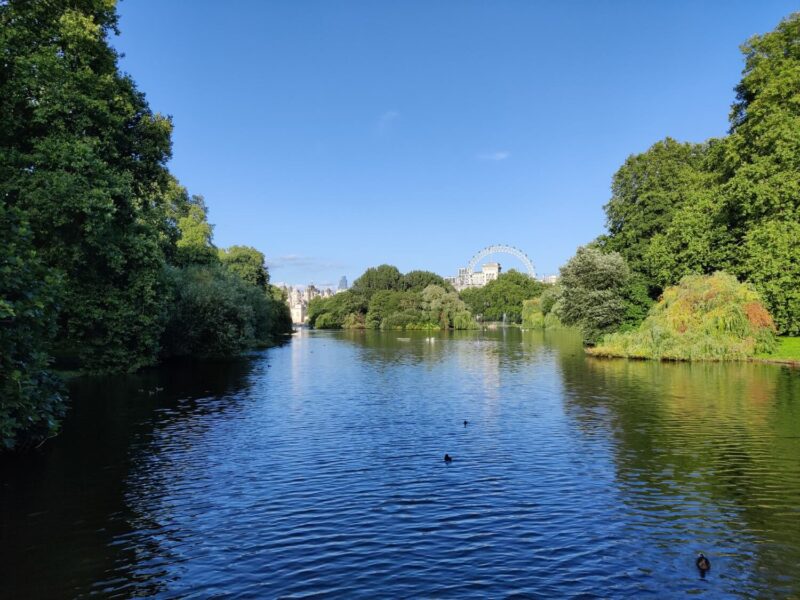

When to go to London and for how long
The best time to visit London is from March to May or September to November. The weather is less predictable these times of year but the city is less crowded than in the peak season of July and August and Christmas and New Year. Make sure you bring a raincoat, umbrella and some warmer clothes, as well as some clothes for warmer weather, as it could be cold one day, rainy the next and warm the day after! Being such a large city, it’s hard to properly explore it in one trip. However, we’d recommend visiting London over at least 3 days if it is your first visit, to see the main sights and attractions. If you have longer, you could spend 10-14 days in the city and explore further out of the central area.
Local language and phrases
The language spoken in London is English. However, London is the home of the cockney. Someone is considered to be a cockney if they are born within earshot of the Bow Bells, which are the bells of St Mary-le-bow church in the City of London. London’s slang is called Cockney rhyming slang. It isn’t as widely spoken nowadays but is still well known in the English and London community. It can be quite fun so here are a few examples to get you going:
Apple and pears – Stairs
Trouble and strife – Wife
Dog and bone – Phone
Ruby Murray – Curry
Loaf of Bread – Head
London travel tips
– London is generally a safe city, particularly in the city centre. It is safe for lone travellers, including lone females. All travellers should be aware of pickpockets and scams in the high traffic tourist areas.
– There are a range of places to eat including those specialising in vegetarian, vegan and gluten-free diets
– All London Airports offer Covid-19 PCR & Antigen tests for those that require them, it is advisable to book a slot in advance if you require a test. There are also Covid-19 tests available in many pharmacies across the city
London travel guide written in October 2021
This site uses affiliate links. When you click on a link and purchase an item, we may be compensated on qualifying purchases. However, this is at no extra cost to you. See our affiliate disclosure for further information.
London Travel Articles
London Walking Tour Videos And Maps
Check out our Youtube Channel for more London walking tours, and tours for other destinations too.
Westminster Walking Tour
A walking tour video highlighting the sights of Westminster, London and accompanying map showing our walking route
City of London Walking Tour
A walking tour video of the City of London area, highlighting the main London attractions in this area and a map showing our walking route
Soho Walking Tour
A walking tour video of Soho area, highlighting London’s popular entertainment district and a map showing our walking route
Southwark Walking Tour
A walking tour video of Southwark area, highlighting some of the most popular London attractions and a map showing our walking route
Pin this London Travel Guide to save it for later!
